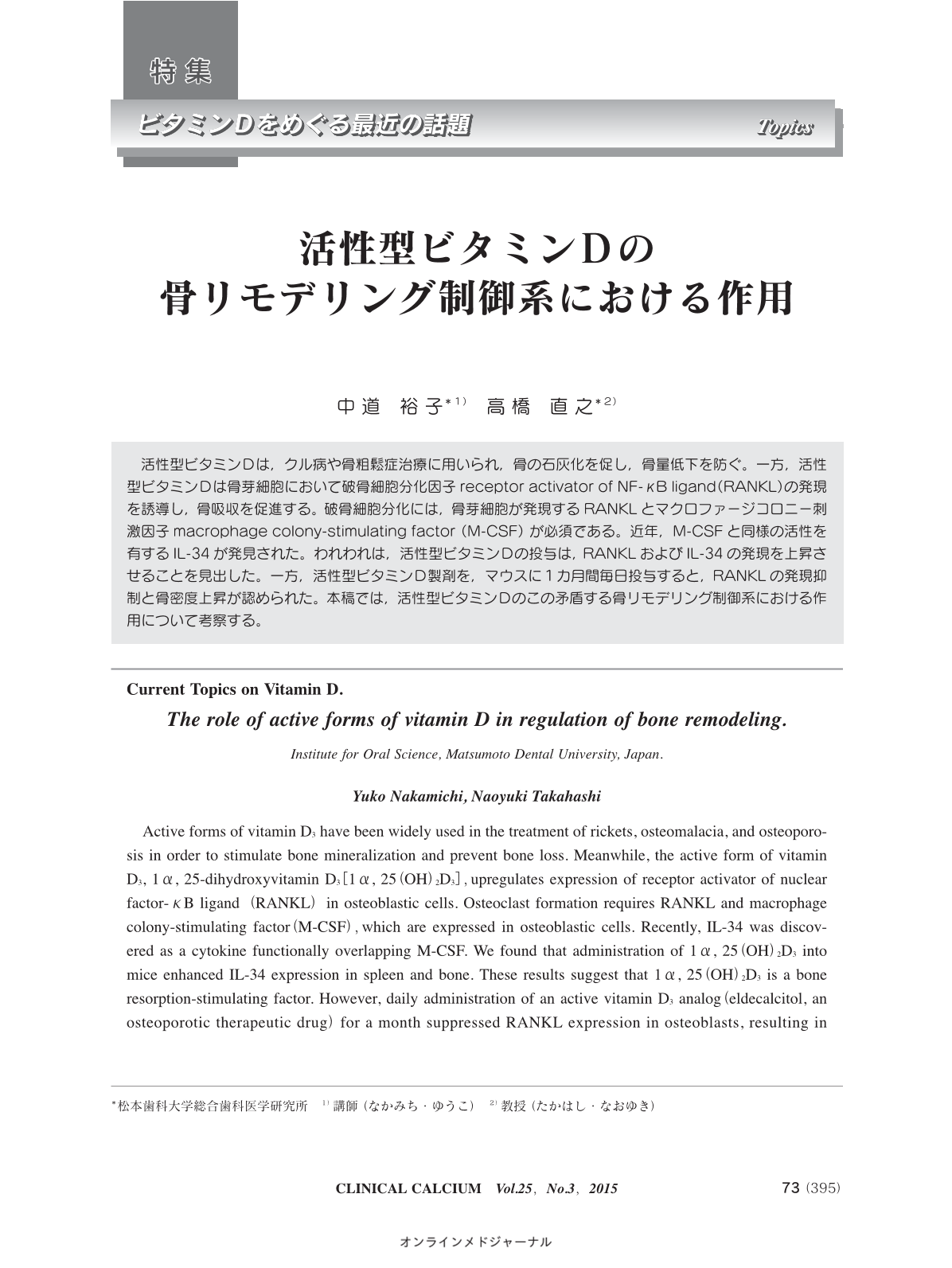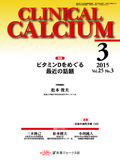Japanese
English
- 有料閲覧
- Abstract 文献概要
- 1ページ目 Look Inside
- 参考文献 Reference
活性型ビタミンDは,クル病や骨粗鬆症治療に用いられ,骨の石灰化を促し,骨量低下を防ぐ。一方,活性型ビタミンDは骨芽細胞において破骨細胞分化因子receptor activator of NF-κB ligand(RANKL)の発現を誘導し,骨吸収を促進する。破骨細胞分化には,骨芽細胞が発現するRANKLとマクロファージコロニー刺激因子macrophage colony-stimulating factor(M-CSF)が必須である。近年,M-CSFと同様の活性を有するIL-34が発見された。われわれは,活性型ビタミンDの投与は,RANKLおよびIL-34の発現を上昇させることを見出した。一方,活性型ビタミンD製剤を,マウスに1カ月間毎日投与すると,RANKLの発現抑制と骨密度上昇が認められた。本稿では,活性型ビタミンDのこの矛盾する骨リモデリング制御系における作用について考察する。
Active forms of vitamin D3 have been widely used in the treatment of rickets, osteomalacia, and osteoporosis in order to stimulate bone mineralization and prevent bone loss. Meanwhile, the active form of vitamin D3, 1α, 25-dihydroxyvitamin D3[1α, 25(OH)2D3],upregulates expression of receptor activator of nuclear factor-κB ligand(RANKL)in osteoblastic cells. Osteoclast formation requires RANKL and macrophage colony-stimulating factor(M-CSF),which are expressed in osteoblastic cells. Recently, IL-34 was discovered as a cytokine functionally overlapping M-CSF. We found that administration of 1α, 25(OH)2D3 into mice enhanced IL-34 expression in spleen and bone. These results suggest that 1α, 25(OH)2D3 is a bone resorption-stimulating factor. However, daily administration of an active vitamin D3 analog(eldecalcitol, an osteoporotic therapeutic drug)for a month suppressed RANKL expression in osteoblasts, resulting in suppression of bone resorption. Here we discuss new findings and hypotheses to explain this contradictory effect of active vitamin D3 on bone remodeling.



